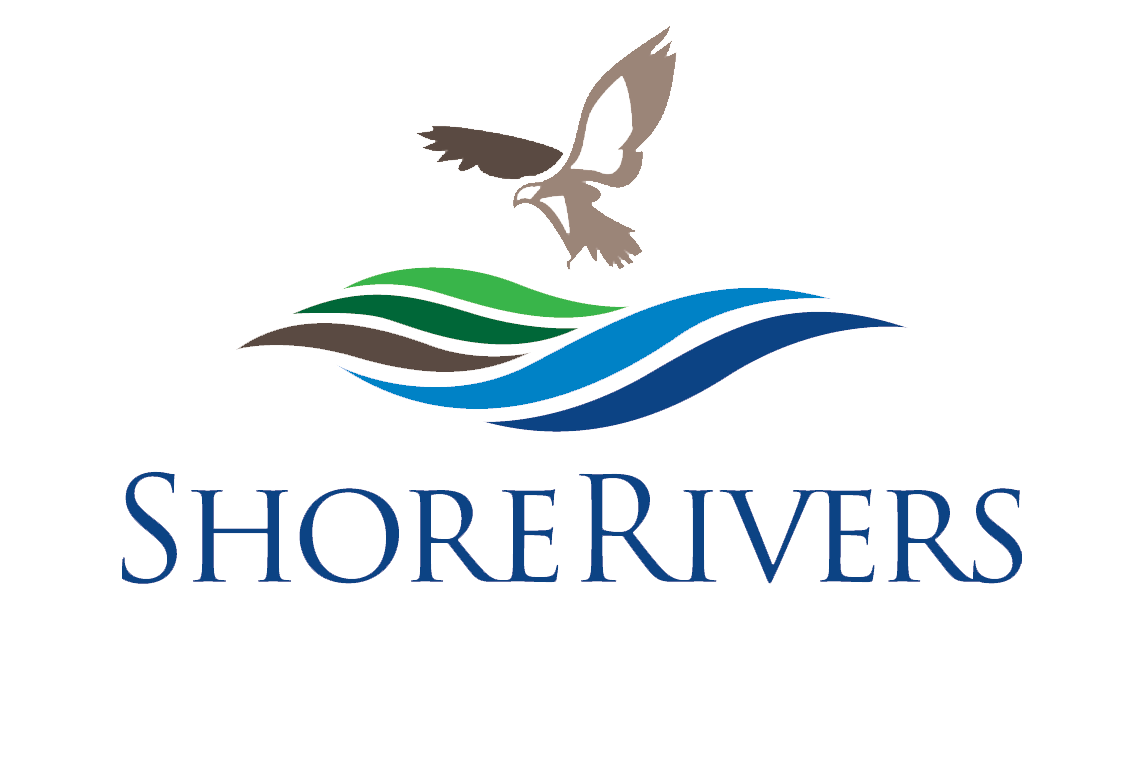ShoreRivers Videos
Explore the videos below for a glimpse into ShoreRivers’ programs and people.

Our vision for the future includes rivers that are swimmable and fishable, landscapes that support thriving waterways, communities that are climate resilient, and individuals across the Eastern Shore who take action to protect their rivers.
December, 2024

Our vision for the future includes rivers that are swimmable and fishable, landscapes that support thriving waterways, communities that are climate resilient, and individuals across the Eastern Shore who take action to protect their rivers.
December, 2024

Our vision for the future includes rivers that are swimmable and fishable, landscapes that support thriving waterways, communities that are climate resilient, and individuals across the Eastern Shore who take action to protect their rivers.
December, 2024

Our vision for the future includes rivers that are swimmable and fishable, landscapes that support thriving waterways, communities that are climate resilient, and individuals across the Eastern Shore who take action to protect their rivers.
December, 2024

Thank you so much to everyone who gave to our Nina Rodale Houghton Riverkeeper Endowment, and to the Rollins- Luetkemeyer Foundation for providing an additional gift!
Restoring and preserving the health of our Eastern Shore waterways requires long-term perseverance and commitment, and your support of those efforts means the world to us.
May, 2024

The 2024 Upper Shore Youth Environmental Action Summit brought together 150 students and 14 teachers from schools across Kent, Caroline, Queen Anne’s, Talbot, and Dorchester counties—all invested in empowering future leaders of the environmental movement to take action today.
May, 2024

Thanks to funding from the Chesapeake Bay Trust & Chesapeake Oyster Alliance, and in partnership with NOAA and the Smithsonian Environmental Research Center, ShoreRivers has been monitoring each of the local oyster sanctuary reefs where we plant oysters.
January, 2024

Press play to get to know Miles-Wye Riverkeeper Ben Ford a little better!
June, 2023

This 17.8 acres of restored wetland on the Choptank River is located on a Talbot County farm and annually reduces an estimated 611 pounds of nitrogen, 22 pounds of phosphorus, and 8 tons of sediment from entering the river. It was built in partnership with Envision the Choptank and the Natural Lands Project, with funding from the National Fish & Wildlife Foundation and Maryland Department of Natural Resources.
June, 2023

On October 18, 1972, the Clean Water Act officially went into effect. Fifty years later, we celebrate the anniversary of this landmark piece of legislation and look forward to what's in store for the next 50.
October, 2022

On Aug. 16, Sassafras Riverkeeper Zack Kelleher and local vets hosted this virtual workshop to educate pet owners and veterinarians throughout the mid and upper Eastern Shore about the causes of harmful algal blooms, the negative health impacts on pets and livestock, and actions people can take to reduce the excess nutrient loading and runoff that triggers major blooms.
August, 2022

ShoreRivers, Maryland Department of Natural Resources, and the Oyster Recovery Partnership are thrilled to be working together on Build-a-Reef: Eastern Bay — a campaign to plant 100 million juvenile oysters in Eastern Bay by 2023.
August, 2022

Learn about the health and challenges of our local waterways and how the most recent grades compare to previous years from Chester Riverkeeper Annie Richards.
May, 2022

This 3.6 acres of restored wetland on the Choptank River drains 15 acres of cropland and enhances habitat with native species.
July, 2022

Community leaders and partners come together to improve water quality in the small headwaters town of Templeville, Maryland.
January, 2022

Enjoy the culmination of our week-long Summer Solstice event. Listen to live music by Phil Dutton & the Alligators playing at Bob Ingersoll’s Silver Barn near Chestertown.
June, 2021

Hear about the health of our rivers from your four Riverkeepers and special guests Nancy Cordes (CBS), Ann Swanson (Chesapeake Bay Commission), and Nick Carter (MD DNR).
May, 2021

It is considered one of the most polluted tributaries in the entire Sassafras River watershed, but now the Upper Sassafras is getting help with managing its heavy nutrient load.
February, 2021

Retiring Executive Director Jeffrey Horstman reflects on ShoreRivers’ accomplishments as 2020 comes to a close.
December, 2020

On July 30, the Sassafras Riverkeeper gave a live update on the status of the toxic algal bloom on the Sassafras, which by that time was the longest, largest, and most toxic ever recorded on the river.
July, 2020

Due to COVID-19 our annual State of the Rivers in 2020 took place virtually. View it here!
May, 2020

A film about our Riverkeepers and the rivers they protect by award-winning filmmakers Sandy Cannon-Brown and Dave Harp.
November, 2019

A film about our Riverkeepers and the rivers they protect by award-winning filmmakers Sandy Cannon-Brown and Dave Harp.
November, 2019

A film about our Riverkeepers and the rivers they protect by award-winning filmmakers Sandy Cannon-Brown and Dave Harp.
November, 2019

A film about our Riverkeepers and the rivers they protect by award-winning filmmakers Sandy Cannon-Brown and Dave Harp.
November, 2019

A film about our Riverkeepers and the rivers they protect by award-winning filmmakers Sandy Cannon-Brown and Dave Harp.
November, 2019

A look at the Marylanders Grow Oysters program on the Eastern Shore.
July, 2019

Large-scale restoration of one headwater stream of the Wye River reduces a significant amount of stormwater runoff and pollution in addition to creating natural habitat and beautifying Chesapeake College.
June, 2018

A look at the ShoreRivers Education Department and their work to provide quality environmental education programming to public school students.
August, 2017
